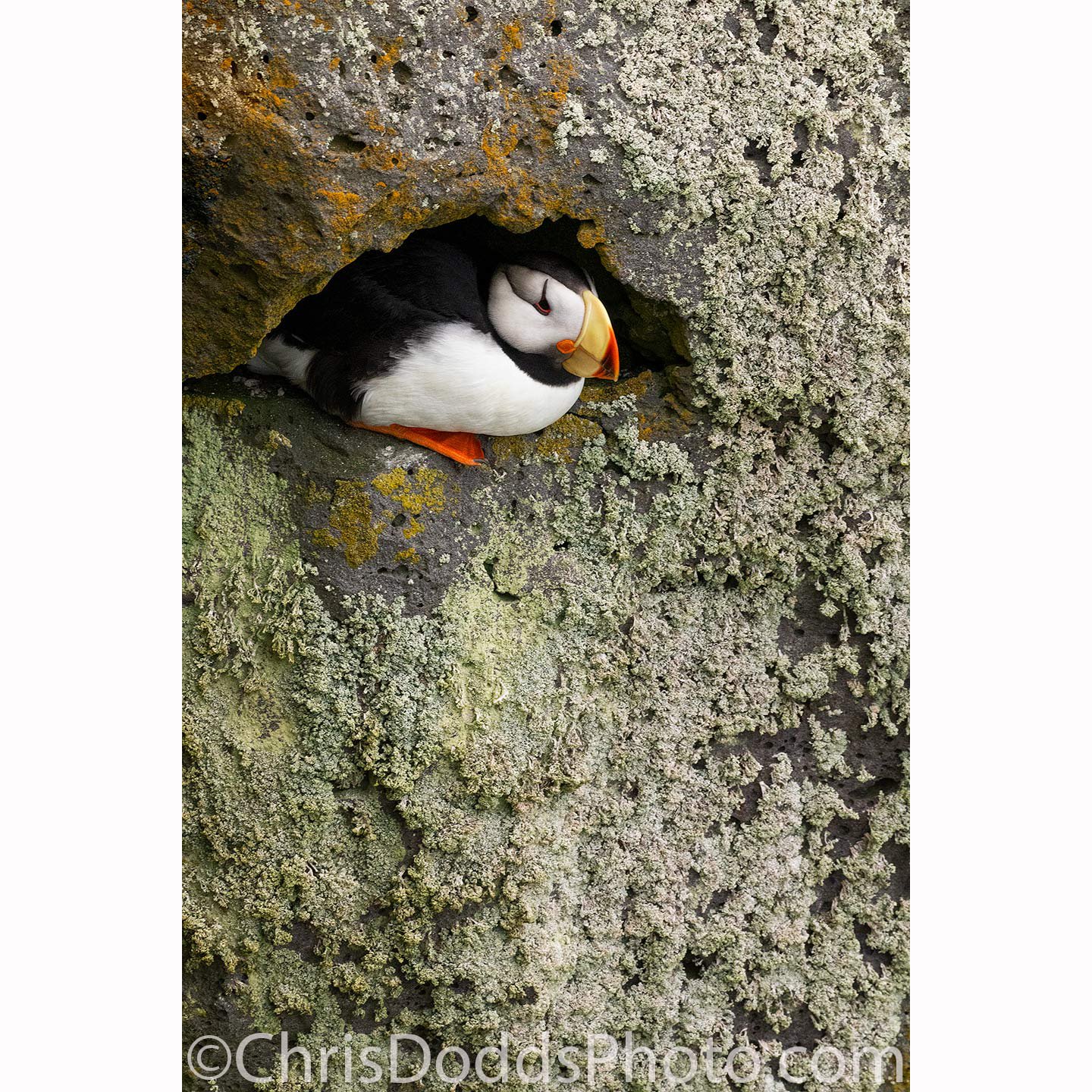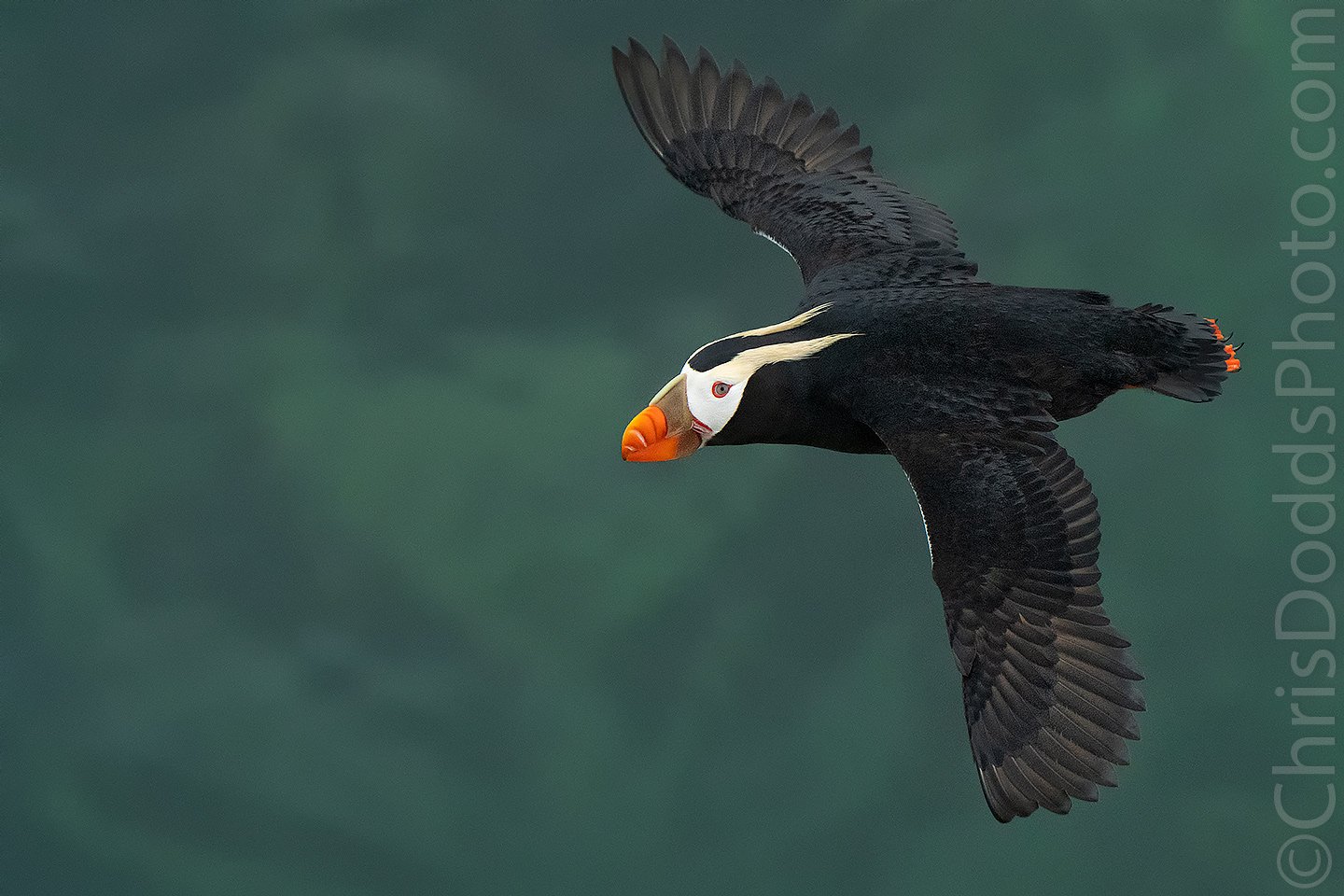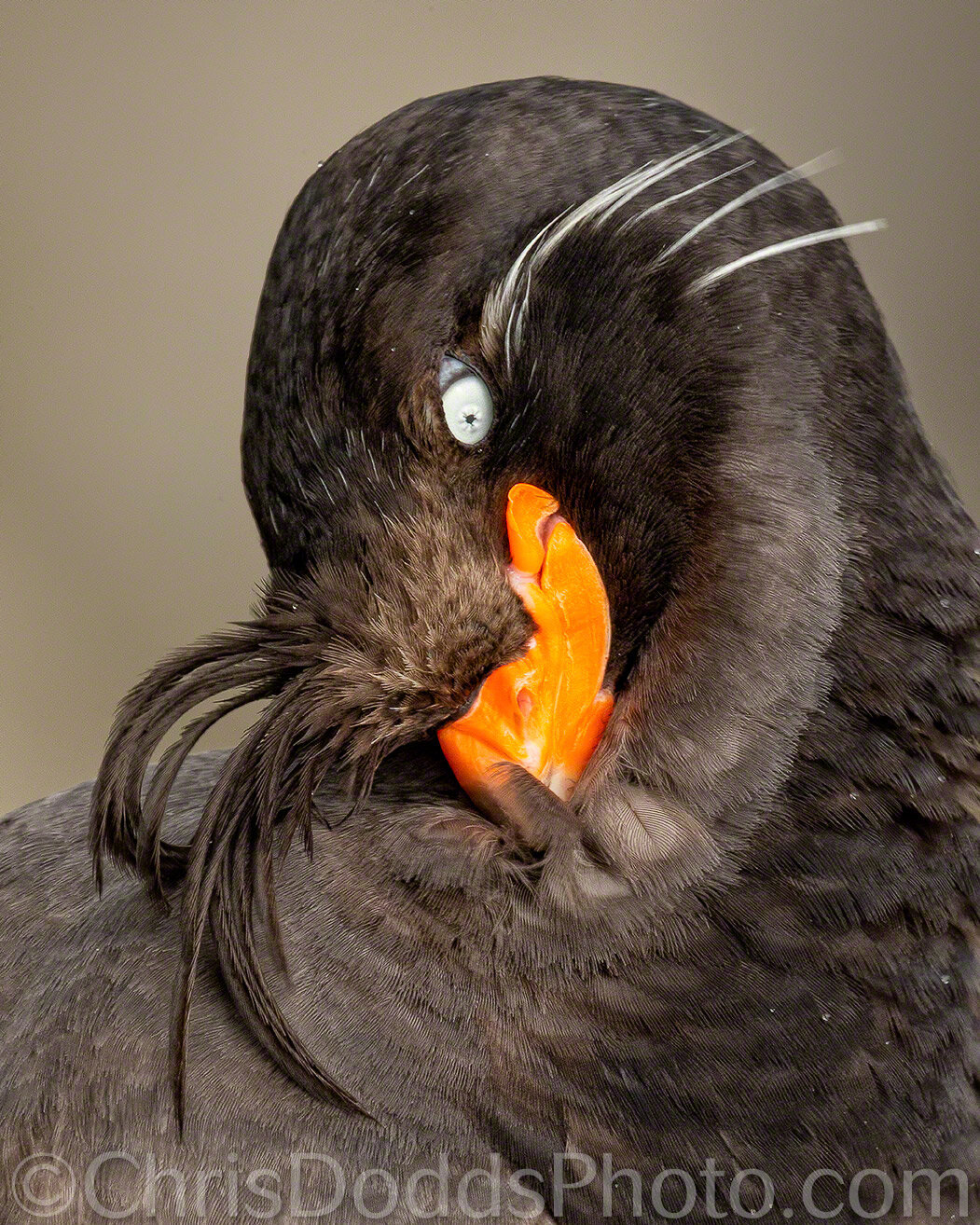Here is a Red-faced Cormorant returning to it’s perch on the cliffs of Saint Paul Island. It was great to see the species doing so well with many more accessible for photos than in recent years. Also known as the Red-faced Shag and Violet Shag, this is likely the least studied North Pacific bird species.
Red-faced Cormorant in-flight against the Bering Sea (Phalacrocorax urile, Cormoran à face rouge, RFCO) Saint Paul Island, AK©Christopher Dodds Sony Alpha 1 Mirrorless camera & Sony FE 600mm f/4 G Master OSS Lens with Sony 2X teleconverter (@1,200mm). ISO 8,000, f/8 @ 1/5,000s. Manual Exposure mode. Join me for my Saint Paul Island, AK workshop next July to learn more CLICK HERE.




















